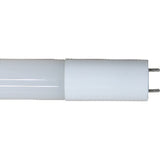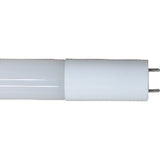Lighting Solutions to Save Energy and Improve Productivity
Posted by Dave on for ProLampSales

With the cost of employing people orders of magnitude more expensive than the cost of operating a lighting system, it is important to strike the right balance between energy efficient lighting and the productivity of employees.
It is no secret that light affects people in a multitude of ways. Some ways are more obvious than others. If there is not enough light on a work surface, eye strain becomes a problem and less work gets done. If there is glare on computer monitors, worker effectiveness is compromised. Light flicker is a minor annoyance for some people and a significant fatigue inducer for others. If the color temperature of light in a workspace is too "warm," most people are not as alert. The list goes on.
An American Society of Interior Designers (ASID) study showed that almost 70% of employees complain about light in their offices at one time or another. There is a good chance that people reading this blog post have recently experienced comfort issues with the lighting in their indoor environments.
What all this leads to is the conclusion that changing a lighting system to save energy might have unintended consequences. According to the Lighting Design Lab in Seattle, "while a 50% reduction in lighting costs using energy-efficient lighting can have a positive impact on the bottom line, just a one percent increase in productivity can dramatically improve profitability." Stated another way, lighting retrofit projects designed to reduce lighting costs could lead to lower productivity and negate any anticipated savings.
Let's use an improbable example to illustrate. Remove one lamp from every 3 lamp fluorescent fixture and energy costs will decline. At the same time, 33% less light will surely reduce productivity and worker morale. This crude approach to saving energy obviously leads to a bad result for the both the employer and the employee.
Carefully designed energy efficient lighting systems will not only save energy but improve productivity. The operative term is "lighting quality." Lighting retrofits should include two objectives: reduce total lighting system costs and improve the quality of light so the workspace is more comfortable.
There are too many types of spaces and occupant work requirements to offer a prescriptive list of best lighting practices. However, several factors should always be addressed when designing a lighting energy retrofit. Can daylight be "harvested" with an improved lighting control system? What is the optimal color temperature and color rendering metric for the space? Are the existing light levels too high or too low based on employee feedback? Will any changes in the lighting system increase or decrease glare? Will lower levels of overhead light and the addition of task lighting with individual workstation control increase employee satisfaction and reduce energy costs?
A past lighting retrofit done in several General Services Administration (GSA) buildings illustrates how asking the right questions leads to innovative lighting design. The most interesting feature was the installation of three-lamp T8 fluorescent fixtures directly over each cubicle in a large open office setting. One of the three lamps produced ambient uplight and the other two directed the light down to the workspace. Digital, dimmable ballasts with integrated occupancy sensors allowed the downward lamps to be dimmed when the cubicle was unoccupied and, when occupied, the the person using the workstation had personal light level control for that cubicle via remote controller.
In spite of a higher number of fixtures than previously for the open office, energy costs went down and staff satisfaction went up.
The innovative GSA retrofit demonstrates how addressing employee satisfaction with the lighting is as important to overall success of a project as focusing on the energy saving lighting technology.
Featured Products (View All)
0 Comments




